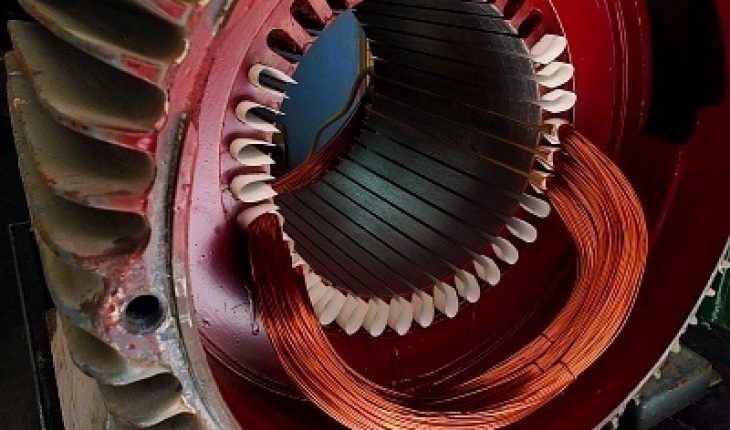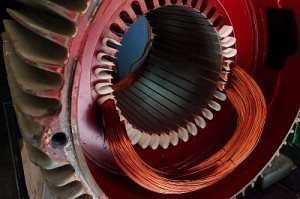Since it was first used in 8000 B.C, people have discovered different uses of copper. Tools made of this element helped advance civilization during the Stone Age. Since that time, it has become an integral part of many industries.
Architectural Applications
Copper is heavily employed in the construction industry. It is commonly found in buildings because it is waterproof. This makes it suitable for cladding, roofing and plumbing. It is also applied in freestanding structures because of its light weight and durability. Lightning rods and roofs are often built of copper.
As a lightning rod they help divert natural lightning from striking the edifice. It is redirected to the ground. Copper based welding arcs are made by soldering the metal. The same method is used for building structures.
Industrial Applications
The metal’s high ductility makes it a practical tool for industrial use. It is the third most widely used metal in industries next to aluminum and iron. It is commonly used in shipbuilding. The metal is alloyed with nickel.
As cupronickel, it can withstand corrosion. Its high heat dissipation is the reason why Watt’s steam engine firebox is made from it. Liquefied, copper becomes a wood preservative. It assists in returning a structure to its original form. Objects can be restored even if they are subject to rot.
Uses of Copper in Electricity
More than half of the copper produced is for electricity. Its core functions are transmission of electricity and power generation. The metal is employed in generators, bushbars, motors and transformers. Properly set the metal produces electricity efficiently and safely. The metal is also used in wiring and electrical equipment. It is present in mobile phones, TV and computers.
Copper is present in electric circuitry and microprocessors. It is also applied for electrical transmission. It is superior to aluminum. The metal is utilized in heat sinks and exchanges. Its heat dissipation capacity is superior to aluminum. The metallic element is used to build magnetron, vacuum tubes and vacuum tubes.
Application in Transportation
The element is used in construction of trains, cars, lorries and other vehicles. Battery currents use high purity copper wire harness systems. The current is transmitted to satellite navigation systems, on-board computers, central locking and lights. Electric supper trams built from this material reduces the pollution that transportation usually produces. The same metal is applied in overhead contact wiring.
Practical Daily Application of Copper
The metallic element is applied in fixtures, doorknobs and other elements in a house. Copper electroplated nickel silver is used for some knives, spoons, knives and frying pans. The same material is used for counters, sinks, bathtubs, and heating cylinders. As pigmented salt the metal can be used for sculptures, statues and decorative art.
Biological Applications
Other uses of copper include being a nutrient for animals and plants. Traces of the metal can be found in bone, muscles, liver and tissues. The main purpose of copper in an organism is serving as an enzyme co-factor. This knowledge isn’t new. The ancients were aware of its antibacterial properties. The Greeks used the metal to cure ulcers and open wounds.
Modern medicine applies copper bracelets to reduce arthritis and joint pains. Its anti-microbial elements assist in producing hygienic surfaces in healthcare institutions. Lack of copper in people may produce shaggy skin, varicose veins and graying of the hair. This metallic element can help in enhancing the skin’s elastic fiber. With enough copper, hair problems may be avoided.
The Properties of Copper
Its most important feature is alloying. Copper combined with tin makes bronze. Joined with zinc, the result is brass. Manufacturers can combine it with different metals depending on how it is going to be used. Ship hulls are built with copper nickel alloy. There are many reasons for this. Fuel efficiency is improved and drag is limited.
Marine life adhesion is limited and seawater corrosion is avoided. Alloying is preferable because copper isn’t as malleable as others. For instance, the malleability of brass means it has good acoustic properties. Today, brass and copper are used to make musical instruments.
Supply and Demand
Demand has grown the past two decades. The biggest demand has come from developing nations. The biggest producer is the Andean region of South America. Almost half the world’s copper comes from the Andes. About 9% comes from America.
The bulk of copper in the US emanates from Arizona and Utah There is no threat in terms of supply. This is because the producers are scattered throughout the world. The metal is recyclable, another of its major attractions. The metal can be reprocessed and re-melted too. This can be done without affecting its properties.
Copper is the main element used in coins. Today, it remains an integral part of many industries. Its resistance to corrosion, thermal conductivity and malleability ensure that it will continue to be used for a long time.

